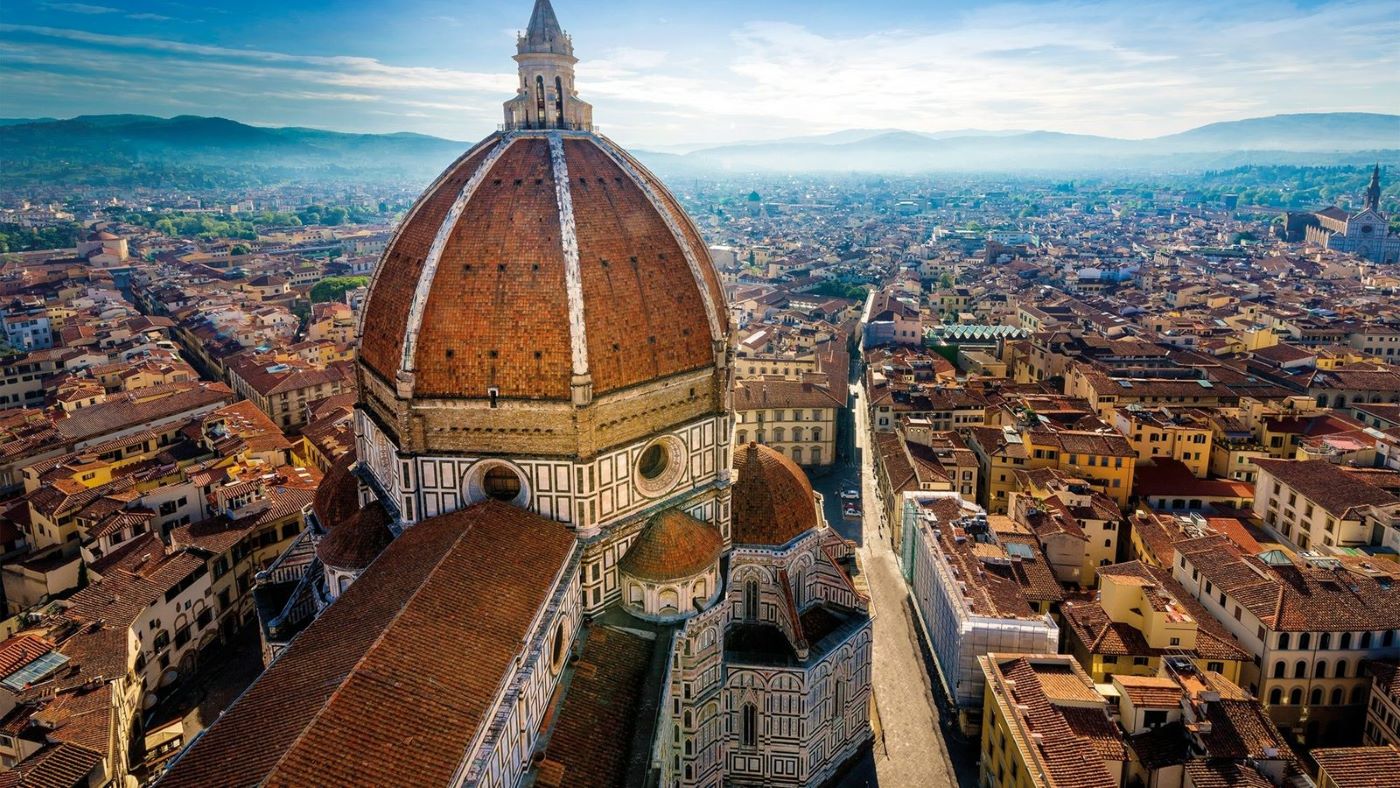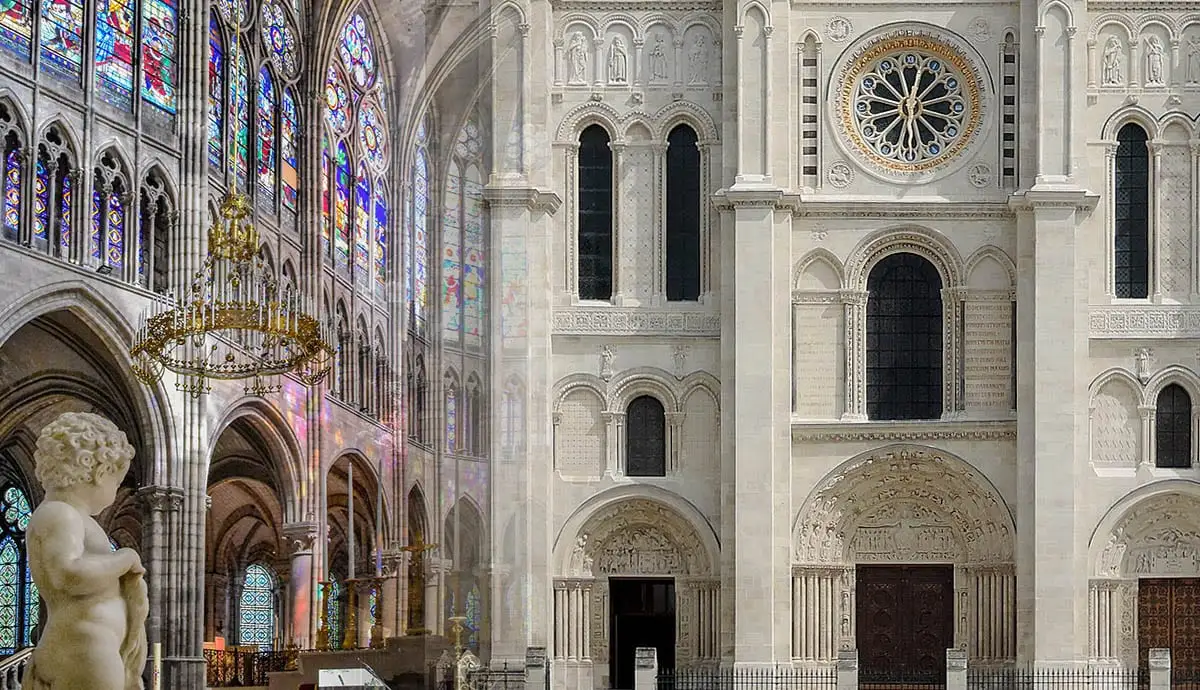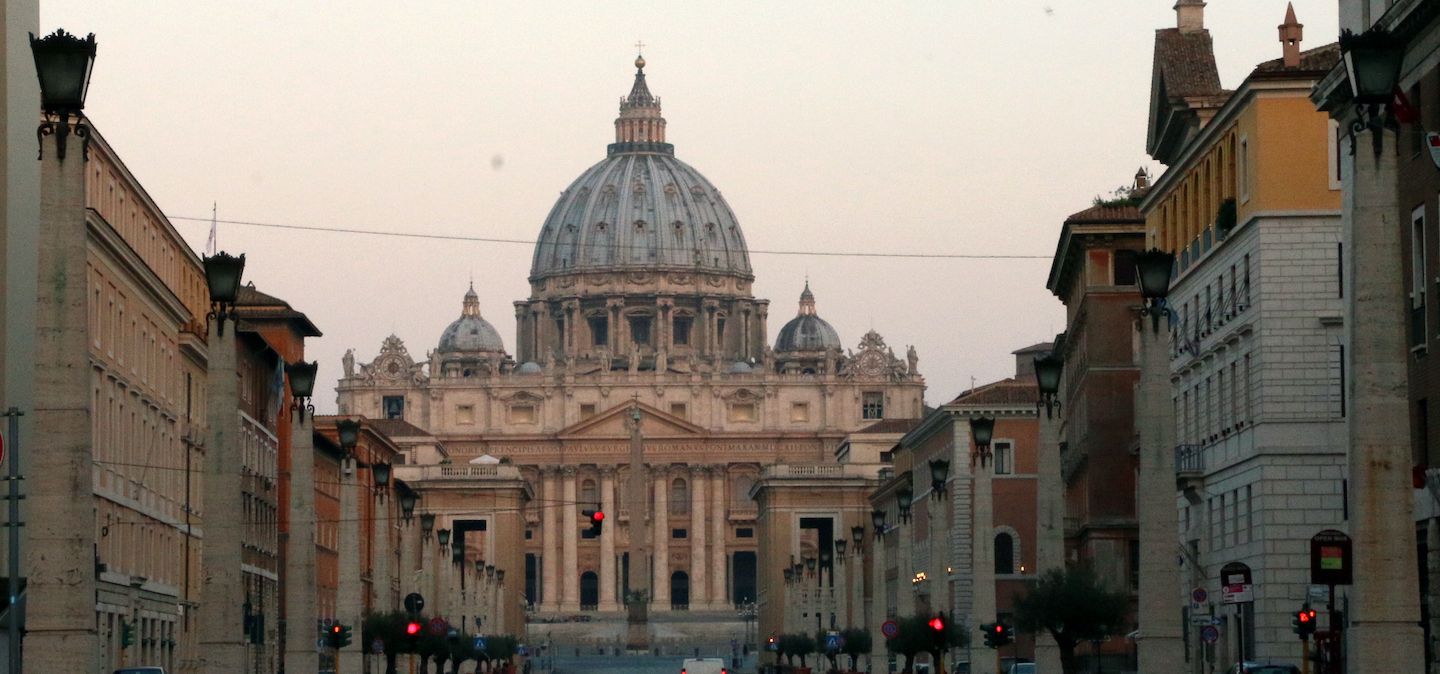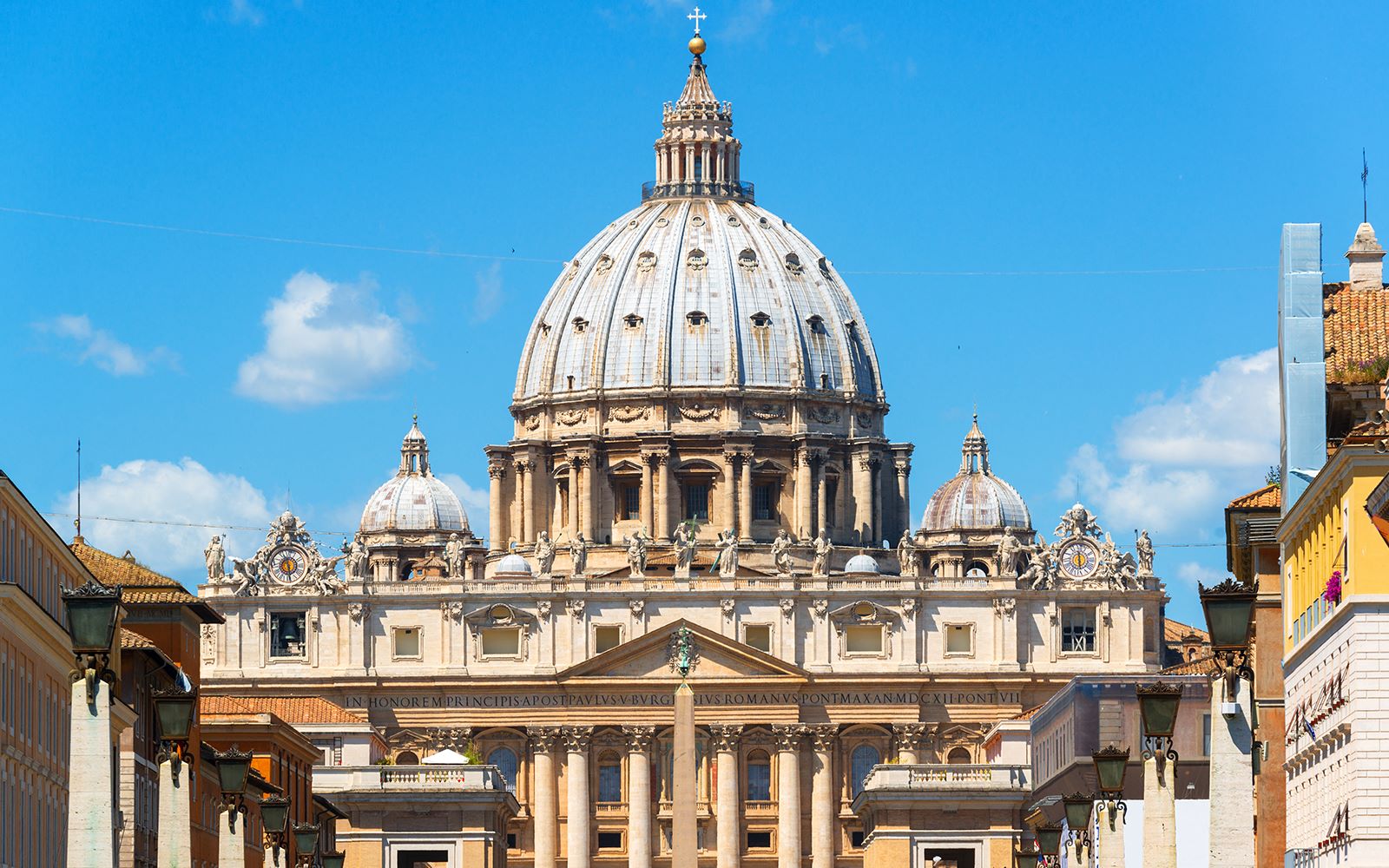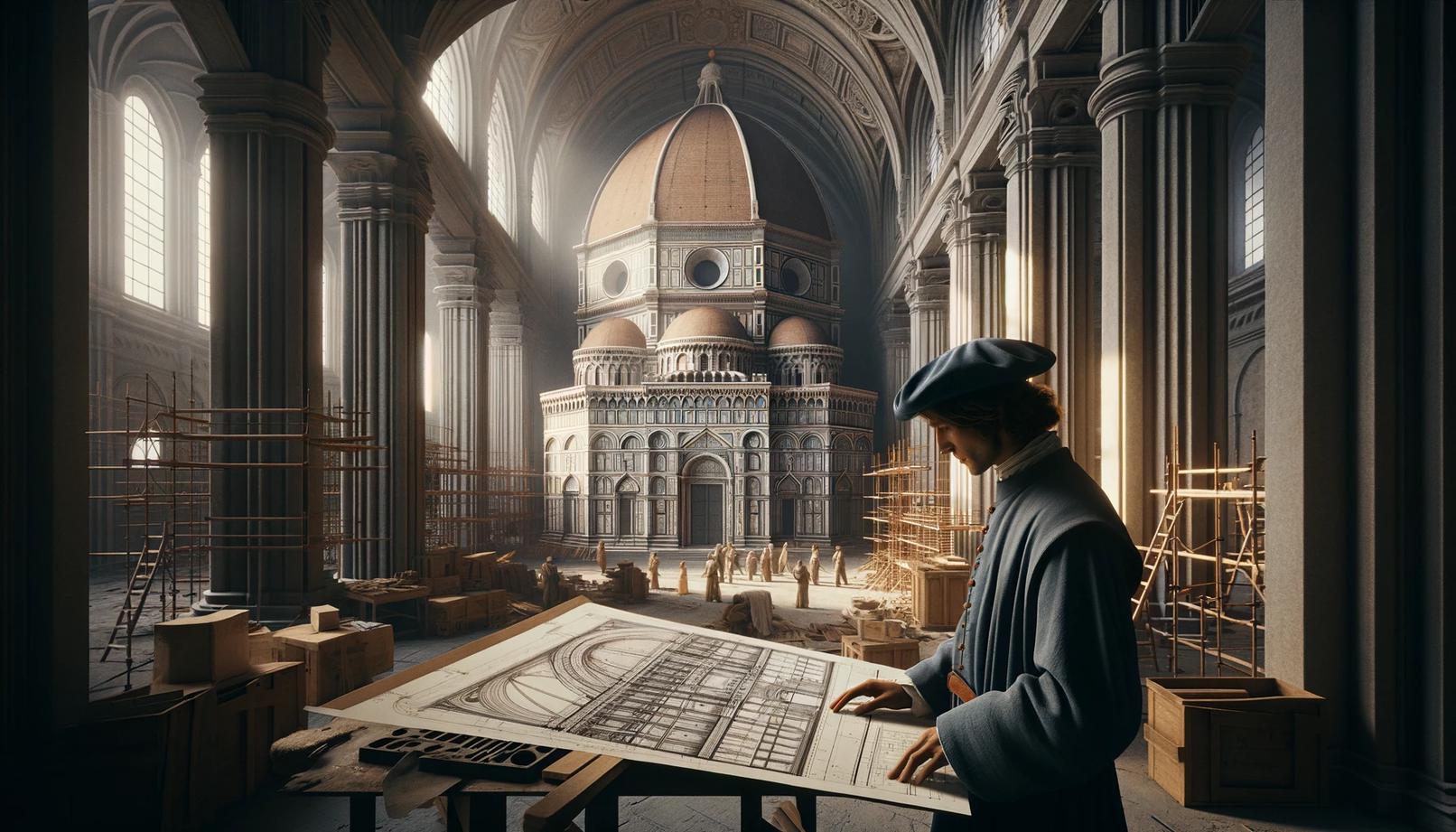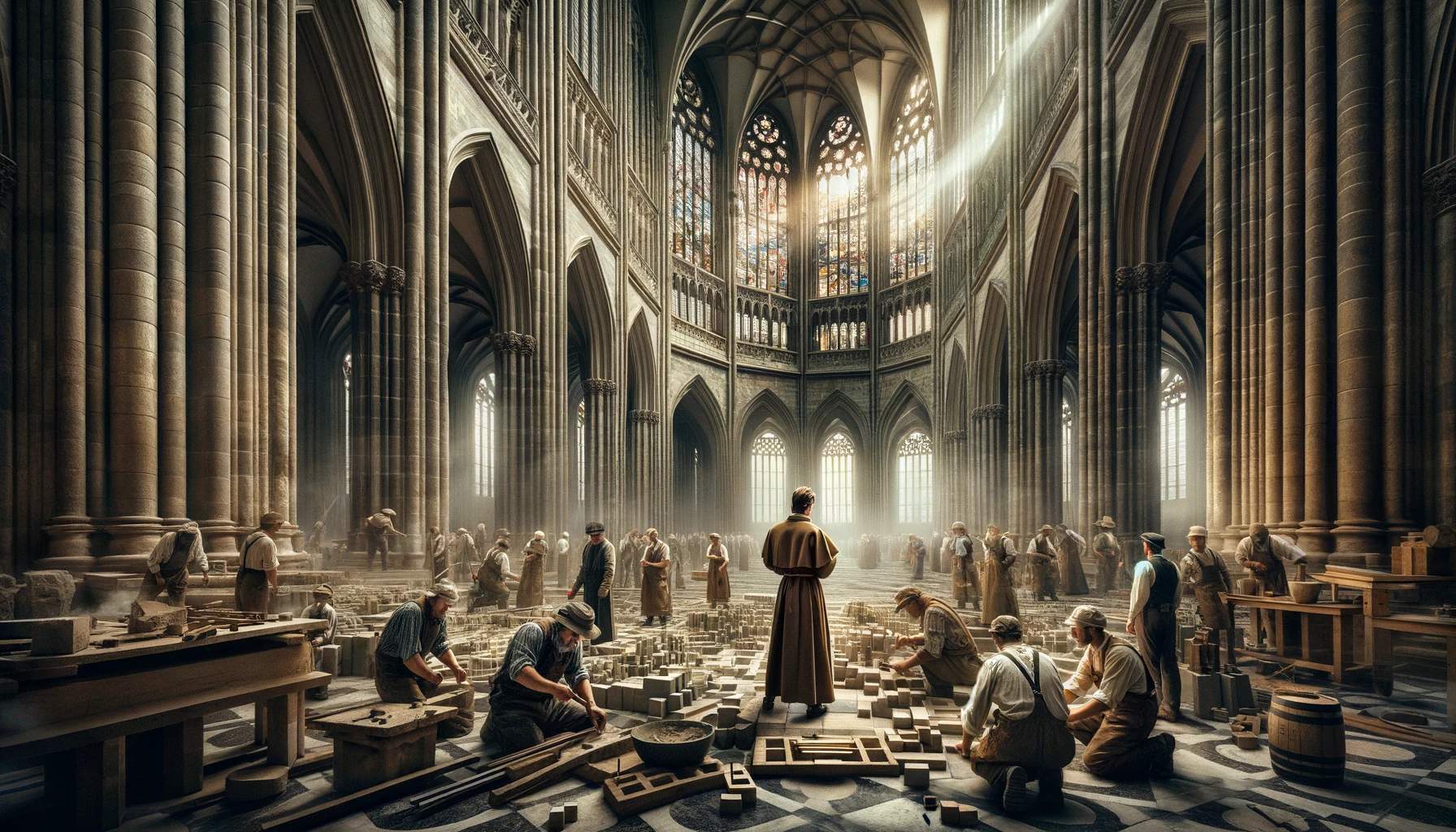Home>Arts and Culture>Who Built The Basilica Of Maxentius


Arts and Culture
Who Built The Basilica Of Maxentius
Published: February 10, 2024
Jason DeRose, Managing Editor at Christian.net, uses his expertise in religion and journalism to deepen understanding of faith's societal impacts. His editorial leadership, coupled with a strong academic background, enriches the platform’s diverse content, earning him recognition in both journalism and religious circles.
Discover the history and architecture of the Basilica of Maxentius, a masterpiece of Roman engineering and a testament to ancient arts and culture. Learn about the builders and the significance of this iconic structure.
(Many of the links in this article redirect to a specific reviewed product. Your purchase of these products through affiliate links helps to generate commission for Christian.net, at no extra cost. Learn more)
Table of Contents
Introduction
The Basilica of Maxentius, also known as the Basilica Nova, stands as a majestic testament to the architectural prowess and grandeur of ancient Rome. This monumental structure, situated in the heart of the Roman Forum, exudes an aura of historical significance and artistic magnificence. Its colossal remnants, though weathered by time, continue to inspire awe and admiration, drawing countless visitors to marvel at its imposing ruins.
As we delve into the story of the Basilica of Maxentius, we embark on a journey through time, unraveling the mysteries and marvels of this ancient edifice. From its inception to its enduring legacy, the basilica's tale is one of ambition, power, and enduring architectural splendor.
The grandeur of the Basilica of Maxentius beckons us to explore its rich history, architectural design, purpose, and lasting impact. Through this exploration, we gain a deeper understanding of the cultural and historical significance of this remarkable structure, shedding light on the ingenuity and vision of its creators. Join us as we uncover the captivating narrative of the Basilica of Maxentius, a testament to the enduring legacy of ancient Roman architecture.
Read more: Who Built The Basilica Cistern
The History of the Basilica of Maxentius
The Basilica of Maxentius, also known as the Basilica Nova, stands as a testament to the grandeur and ambition of Emperor Maxentius, who commissioned its construction. The basilica's origins can be traced back to the early 4th century AD, during the reign of Maxentius, a formidable ruler who sought to leave an indelible mark on the city of Rome. Maxentius envisioned the basilica as a symbol of his power and authority, intending it to serve as a monumental public space for legal and civic proceedings.
Construction of the basilica commenced around 308 AD and continued under the reign of Emperor Constantine following Maxentius's defeat in 312 AD. The basilica's construction spanned several years, with its completion marking a significant architectural and political achievement. The sheer scale and opulence of the basilica reflected the aspirations of its patrons, embodying the grandeur and magnificence of Roman imperial architecture.
The basilica's historical significance was further underscored by the events surrounding its construction. Maxentius, known for his rivalry with Constantine, sought to assert his authority through monumental building projects, and the basilica was a prime example of this ambition. However, following Constantine's victory at the Battle of the Milvian Bridge, the basilica became intertwined with the narrative of Rome's shifting political landscape, symbolizing the transition from the reign of Maxentius to the ascendance of Constantine.
Despite the tumultuous political climate, the Basilica of Maxentius endured as a testament to the architectural prowess and imperial ambitions of its era. Its imposing structure and monumental dimensions reflected the power and influence of the Roman emperors, leaving an indelible mark on the cityscape of ancient Rome.
The history of the Basilica of Maxentius is a compelling saga of political ambition, architectural innovation, and historical upheaval. Its legacy continues to resonate through the ages, offering a glimpse into the grandeur and complexity of ancient Roman civilization.
The Architectural Design and Construction
The architectural design and construction of the Basilica of Maxentius stand as a testament to the ingenuity and engineering prowess of ancient Roman builders. The basilica, renowned for its colossal dimensions and innovative architectural features, represents a pinnacle of Roman architectural achievement.
The basilica's design was characterized by its immense scale, with a central nave soaring to a height of approximately 35 meters, flanked by two lower side aisles. The vast interior space, adorned with majestic columns and soaring arches, created a sense of awe-inspiring grandeur. The innovative use of concrete and brick allowed the builders to create expansive interior spaces, pushing the boundaries of architectural possibility in ancient Rome.
The construction of the basilica was a monumental undertaking, requiring meticulous planning and engineering expertise. The use of concrete as a primary building material allowed for the creation of massive vaulted ceilings and soaring arches, showcasing the technical prowess of Roman builders. The basilica's iconic central nave, with its towering arches and majestic proportions, exemplified the architectural innovation of the era.
The exterior facade of the basilica featured a series of colossal columns, each standing as a testament to the grandeur and opulence of Roman imperial architecture. The sheer scale of the basilica's exterior, adorned with intricate architectural details and decorative elements, conveyed a sense of imperial power and authority.
The construction of the Basilica of Maxentius also showcased the advanced engineering techniques employed by ancient Roman builders. The use of concrete, brick, and innovative architectural elements allowed for the creation of a monumental structure that defied the limitations of its time. The basilica's architectural design and construction represented a bold statement of imperial ambition and engineering prowess, leaving an enduring legacy that continues to captivate and inspire visitors to this day.
In summary, the architectural design and construction of the Basilica of Maxentius stand as a testament to the unparalleled skill and vision of ancient Roman builders. The monumental scale, innovative use of materials, and engineering ingenuity showcased in the basilica's construction exemplify the enduring legacy of Roman architectural achievement, inviting admiration and awe from all who behold its majestic ruins.
The Purpose and Function of the Basilica
The Basilica of Maxentius, with its imposing architecture and grandeur, served a multifaceted purpose that reflected the social, political, and cultural dynamics of ancient Rome. As a monumental public space, the basilica fulfilled a range of functions that were integral to the fabric of Roman society.
First and foremost, the basilica served as a venue for legal and civic proceedings, embodying the administrative and judicial functions of the Roman state. Its vast interior space, adorned with majestic columns and soaring arches, provided an awe-inspiring setting for legal proceedings, commercial activities, and public gatherings. The central nave, with its towering dimensions, offered a dignified space for the conduct of legal affairs, underscoring the basilica's role as a hub of civic administration and justice.
Furthermore, the basilica functioned as a center of commercial activity and public interaction. The expansive interior, with its open layout and grand architectural features, facilitated commercial transactions, negotiations, and social exchanges. Merchants, traders, and citizens alike converged within the basilica's halls, engaging in a myriad of commercial and social activities that contributed to the bustling energy of ancient Roman urban life.
In addition to its administrative and commercial functions, the basilica also served as a venue for public gatherings, cultural events, and communal celebrations. Its monumental dimensions and awe-inspiring architecture provided an ideal setting for public speeches, ceremonies, and communal assemblies, fostering a sense of civic pride and communal identity among the citizens of ancient Rome.
Moreover, the basilica's strategic location within the Roman Forum, the political and social heart of the city, underscored its significance as a symbol of imperial power and authority. As a monumental architectural edifice commissioned by Emperor Maxentius, the basilica projected the grandeur and prestige of the Roman imperial establishment, serving as a physical manifestation of imperial power and influence.
In essence, the Basilica of Maxentius embodied a multifaceted purpose, serving as a nexus of legal, commercial, social, and political activities within the vibrant tapestry of ancient Roman society. Its enduring legacy as a monumental public space reflects the enduring impact of Roman architectural innovation and the integral role of grand architectural edifices in shaping the social and cultural dynamics of antiquity.
The Legacy of the Basilica of Maxentius
The legacy of the Basilica of Maxentius transcends the boundaries of time, echoing through the annals of history to leave an indelible mark on the cultural and architectural heritage of ancient Rome. Despite the ravages of time and the vicissitudes of history, the basilica's enduring legacy endures as a testament to the grandeur, ambition, and architectural innovation of its era.
The monumental ruins of the basilica, with their towering arches and majestic columns, stand as a poignant reminder of the architectural prowess and engineering ingenuity of ancient Roman builders. The sheer scale and opulence of the basilica's remnants continue to captivate visitors, offering a glimpse into the grandeur and magnificence of Roman imperial architecture. As a testament to the enduring legacy of the basilica, its remnants have inspired countless artists, architects, and historians, serving as a wellspring of creativity and scholarly inquiry.
Moreover, the basilica's legacy extends beyond its architectural significance, encompassing its role as a symbol of political power and imperial ambition. The narrative of the basilica, intertwined with the political upheavals of ancient Rome, reflects the shifting tides of power and the enduring legacy of imperial patronage. As a physical manifestation of imperial authority, the basilica's legacy resonates through the ages, offering insights into the complex interplay of politics, architecture, and cultural identity in ancient Rome.
Furthermore, the basilica's legacy endures as a touchstone of cultural and historical memory, inviting contemplation and reflection on the grandeur and complexity of ancient Roman civilization. Its monumental ruins, set against the backdrop of the Roman Forum, evoke a sense of awe and wonder, inviting visitors to ponder the legacy of a bygone era and the enduring impact of Roman architectural innovation.
In essence, the legacy of the Basilica of Maxentius transcends its physical remnants, weaving a narrative of architectural splendor, political ambition, and cultural resonance. Its enduring legacy serves as a testament to the enduring impact of ancient Roman civilization, inviting visitors to embark on a journey through time and immerse themselves in the grandeur and majesty of a bygone era.

